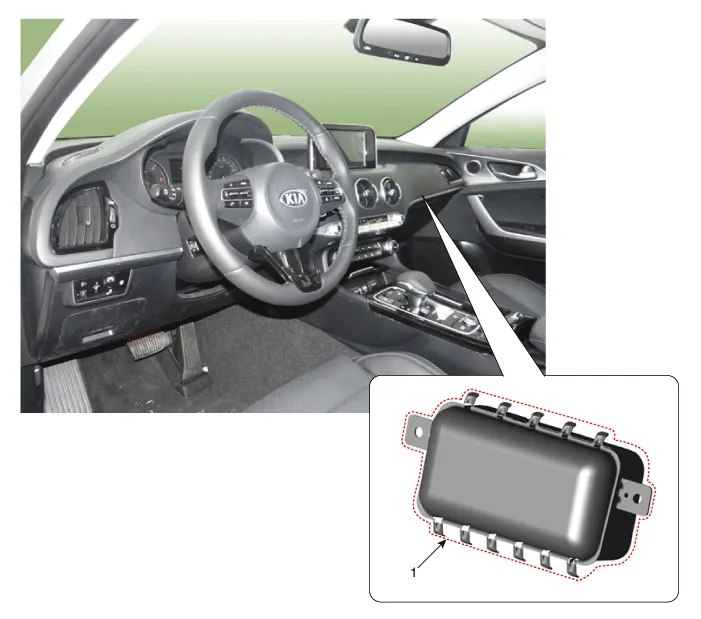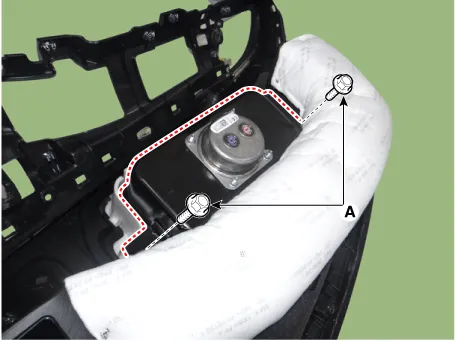Kia Stinger CK: Airbag Module / Passenger Airbag (PAB) Module
Description and operation
| Description |
Installed inside the crash pad, the passenger airbag (PAB) protects the front passenger in the event of a frontal crash. The SRSCM determines if and when to deploy the PAB.
Never attempt to measure the circuit resistance of the airbag module (squib) even if you are using the specified tester. If the circuit resistance is measured with a tester, accidental airbag deployment will result in serious personal injury. |
Components and components location
| Components |

| 1. Passenger Airbag (PAB) |
Repair procedures
| Removal |
| 1. |
Disconnect the negative battery terminal, and wait for at least three minutes before beginning to work. |
| 2. |
Remove the main crash pad. (Refer to Body (Interior and Exterior) - "Main Crash Pad Assembly")
|
| 3. |
Remove the PAB mounting bolts.
|
| Installation |
| 1. |
Disconnect the battery negative terminal, and wait for at least three minutes before beginning to work. |
| 2. |
Install in the reverse order of removal. |
| 3. |
Reconnect the negative battery terminal. |
| 4. |
After installing the passenger airbag (PAB), confirm proper system operation: Switch "ON" the ignition. The SRS indicator light should turn on for about six seconds and then off. |
Other information:
Kia Stinger (CK) 2018-2023 Service Manual: Floor Console Assembly
Components and components location Component Location 1. Floor console assembly Repair procedures Replacement Put on gloves to protect your hands. • Use a plastic panel removal tool to remove interior trim pieces without marring the surface.Repair procedures Oil Specification 1. The HFC-134a system requires synthetic (PAG) compressor oil whereas the R-12 system requires mineral compressor oil. The two oils must never be mixed. 2. Compressor (PAG) oil varies according to compressor model. Be sure to use oil specified for the model of compressor.




